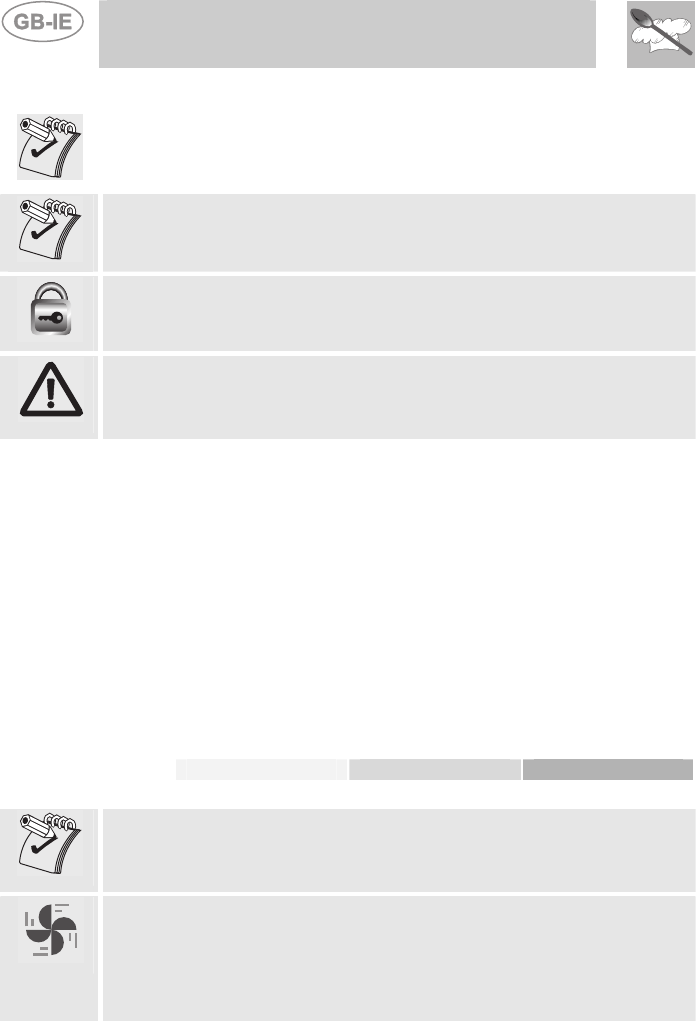
Instructions for the User
76
10.5 Pyrolysis: automatic oven cleaning (for the main oven only)
To keep stainless steel in good condition, it must be cleaned regularly,
after each use, first allowing it to cool.
Before starting the automatic cleaning cycle, make sure that the oven
does not contain any foods or large spills from previous cooking
operations inside.
A door interlock device means that the door cannot be opened during
the procedure.
In order to avoid the product overheating during pyrolysis of the large
oven (left), it is recommended not to use the small oven (right). In any
case, if this condition occurs, thermal protection devices will be activated
to guarantee your safety and that of the product.
10.5.1 Before starting the automatic cleaning cycle
Pyrolysis may be carried out at any time of the day or night (if you wish to
benefit from the lower cost of electricity overnight). Before proceeding,
check the following:
• only the baking tray, the oven tray and the roof liner may be left
inside the oven since they will withstand the high temperatures of the
pyrolysis process; all the other accessories must be removed from
inside the oven;
• remove the most obvious dirt from the inside of the oven and the
surface of the internal door glazing. (cleaning it by Pyrolysis would
take too long);
• make sure that the oven door is firmly closed.
• When setting the cleaning cycle duration, refer to the chart below:
LIGHT DIRT MEDIUM DIRT HEAVY DIRT CLEANING
DURATION
90 MIN. 135 MIN. 180 MIN.
During the first automatic cleaning cycle unpleasant smells may occur
due to the normal evaporation of oily manufacturing substances. This is
an absolutely normal phenomenon which disappears after the first
cleaning cycle.
During the automatic cleaning cycle the fans make more noise because
they are running at higher speed. This is an absolutely normal function,
intended to provide more effective heat dispersal. At the end of the
pyrolysis process the fans continue to run automatically for long enough
to prevent overheating of the sides of the cabinet and the front of the
oven.


















